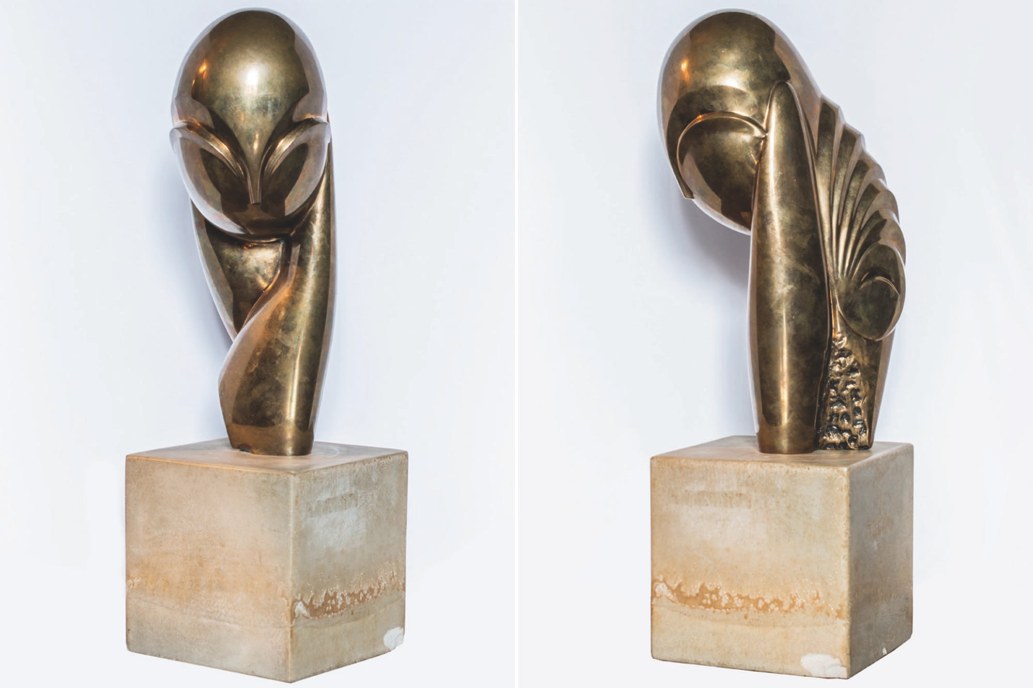
An 88-year-old New York collector is suing a Philadelphia lawyer for allegedly tricking him into selling a Constantin Brancusi bronze for just $100,000, far less than what he claims it is worth. Stuart Pivar alleges that the lawyer, John McFadden, said he would help sell the work to the Philadelphia Museum of Art or to Christie’s auction house, but instead cheated him, essentially stealing the prized sculpture.
Pivar, who is representing himself, is seeking $200 million in damages, as first reported in the New York Post. The complaint does not give a dollar value for the work. Titled Mademoiselle Pogani II, the sculpture comes from the estate of Constantin Antonovici, Brancusi’s assistant, who made his bronze casts from 1947 to ’51. Casts of the same work also belong to the Yale University Art Gallery in Connecticut and the Albright-Knox Art Gallery in Buffalo, New York.
According to the artnet Price Database, Brancusi’s auction record is $71.18 million, set in May 2018 with the sale of the 1932 bronze cast of La jeune fille sophistiquée (Portrait de Nancy Cunard) at Christie’s New York. The Romanian artist held the record for the most expensive sculpture ever sold at auction from 2002 to 2007.
A longtime collector, Pivar has been buying art “since the Middle Ages,” he joked to artnet News. His collection, begun when he was just 18, includes ancient and Medieval statues, Old Master paintings by the likes of El Greco and Francisco Goya, and works by American artists such as Georgia O’Keeffe, Jackson Pollock, and Andy Warhol.
This photo appears to show John McFadden carrying Stuart Pivar’s Constantin Brancusi sculpture in his arms leaving the collector’s apartment. Photo courtesy of Stuart Pivar.
“I have probably bought and sold thousands of things,” Pivar said. The Brancusi had come into his collection only a year or two ago, purchased from a woman who had bought it from Antonovici’s estate. (He refused to divulge what he paid for it.)
The complaint alleges that McFadden approached Pivar with a plan to sell the Brancusi under his own name. McFadden claimed that to do so would be advantageous to both men, although his reasoning isn’t exactly clear. “It was part of the overall plan he had proposed when he became my attorney,” said Pivar. “I really never gave it that much thought.”
McFadden, who was named to the board of the Barnes Museum in Philadelphia earlier this year, did not respond to a request for comment.
To put the scheme in motion, according to Pivar, McFadden picked up the sculpture from the collector’s West Side apartment, ostensibly to bring it to the museum for the final sale. Photographs filed to the court show McFadden leaving with the 50-odd-pound artwork, cradling it in his arms. “We suggested that we use a regular transporter to bring the thing to Philadelphia, but he didn’t want to do it that way,” Pivar recalled.
Constantin Brancusi, Mademoiselle Pogany I (1912). Photo courtesy of the Philadelphia Museum of Art, ©Artists Rights Society (ARS), New York /ADAGP, Paris.
Two weeks later, on May 16, McFadden was back, with a contract for him to purchase the work for $100,000. Pivar signed it.
But when Pivar checked in on the deal’s progress a few days later, “McFadden emailed back, to the shock and emotional distress of the Plaintiff, that the deal was final and that the sculpture would remain in the Defendant’s possession forever,” reads the complaint.
McFadden had allegedly claimed that he was a trustee of the Philadelphia Museum of Art, but Pivar says the museum has since told him that the lawyer was removed from the board for misconduct in 2014. (The institution confirmed that McFadden’s board term had ended in 2014, but did not comment on the circumstances.) As McFadden pointed out in his sale’s pitch to Pivar, the museum already owns the original marble version of a similar work, Mademoiselle Pogani I.
The complaint accuses McFadden of “theft by deception,” arguing that his intent was always “to obtain ownership of the statue itself by deceit, misrepresentation, and subterfuge.”
Pivar does not have a copy of the bill of sale transferring ownership of the sculpture to McFadden, and says he only sued as a last resort. “He was my attorney and he said ‘sign here,'” he said. “And what do you do when your attorney says ‘sign here’?”